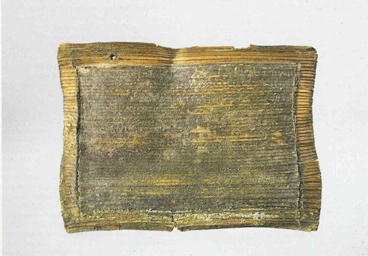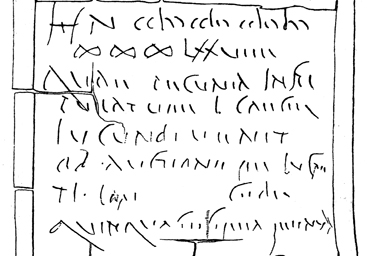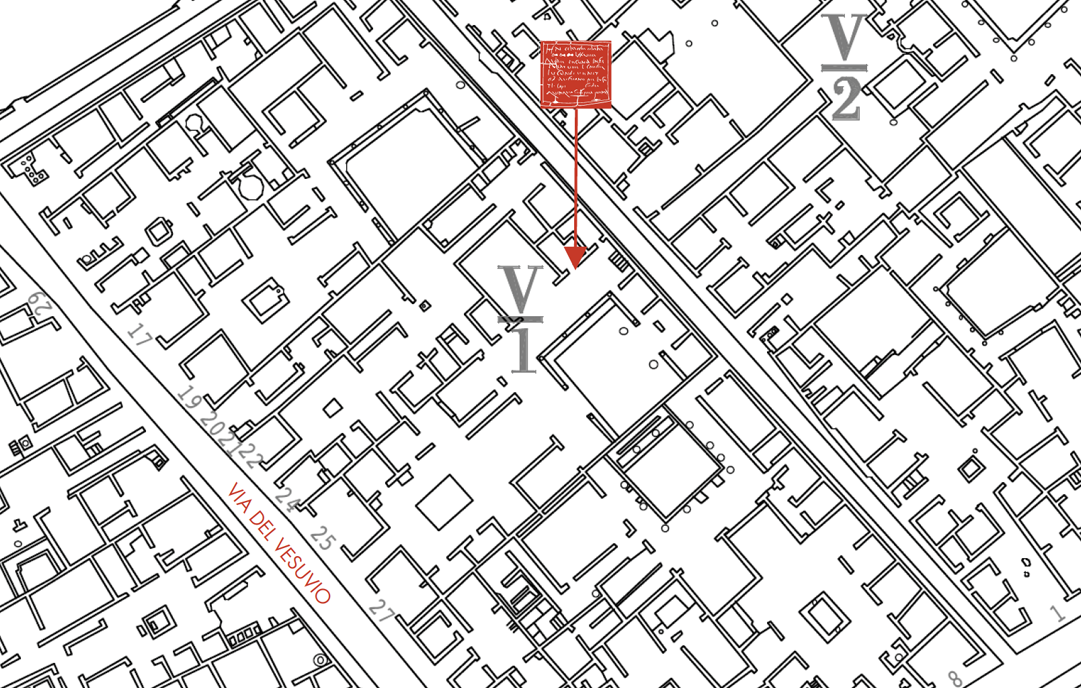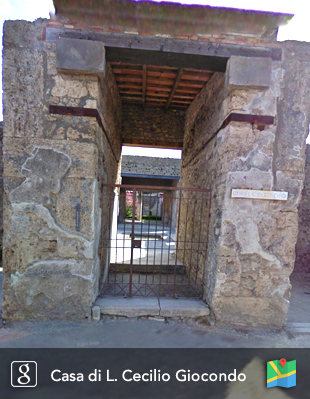Step 5 - The house of Cecilio Giocondo

In the house of Lucio Cecilio Giocondo, several wax tablets provide an exceptional record on the sale of real estate and securities, animals and slaves. Other activities such as rent, loans and tax collection are also documented.
During the 1875 excavations in the home of the "banker" Lucio Cecilio Giocondo, the discovery of a series of wax tablets provided extraordinary documentation on the use of credit for some types of economic transactions and activities.
Wax tablets were a common writing tool in the ancient world: the text was engraved on a rectangular tablet coated with wax with a pointed instrument (the stilus). Depending on the length of the document, several tablets could be tied up and used together. The devastating effects of the Vesuvius eruption charred the tablets, allowing them to be read, albeit with considerable difficulties of decipherment.
153 documents were recovered showing receipts (apochae) issued to Giocondo in front of witnesses for the sums paid by him to buyers in auctions or private citizens for small transactions. The receipts show the name of the seller and in one case the buyer, sometimes the object of the sale, the names of witnesses and the amount paid by the "banker". These are mostly modest sums, sometimes a few hundred sesterces (the highest of all is 38,000 sesterces), confirming that the citizens benefitting from this service belonged to the middle class, medium-sized merchants or landowners.
The use of capital
CIL IV 3340 X
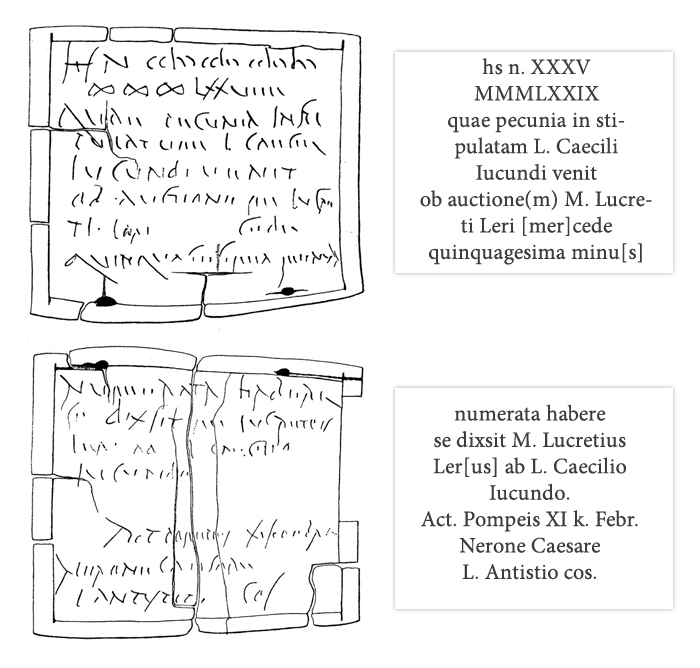
Comment
The parts shown above are pages two and three of a triptych consisting of three tablets originally joined together, of which the other pages are either unwritten (p. 1 and 6), or no longer legible (pp. 4-5). The tablets, which were sealed with sealing wax after being signed by the parties and witnesses, were documentary evidence and had a value similar to that of our notarial deeds.
Our Cecilio Giocondo, in whose house was found an archive containing a large number of these documents, proves to be a kind of banker and stockbroker. In this case, the tablets act as a receipt given by Marcus Lucretius Lero to Lucio Cecilio Giocondo for the auction sale of his possessions. The recorded sum, consisting of 37,332 sesterces, to which must be added a premium equal to its fiftieth part, namely 746.64 (rounded off to 747) sesterces, is the most significant sum among all the economic transactions found in Cecilio Giocondo's archive.
Read more
As papyrus, considerably more expensive, was usually reserved for literary works, wax tablets constituted the most common writing medium for the most varied uses. They were made out of a framed wooden support coated with wax that was engraved with a special pointed tool, the stylus, which had a flat side used to delete the text already written and re-use the tablet.
Usually in groups of two or three linked together, the tablets would be closed like the pages of a book and sealed with the mark or the name of the person who wrote them as proof of authenticity, if they were to be sent as a message. If they were to be used as deeds, the procedure was more complex, requiring the signatures of various witnesses before sealing.
The wax tablets discovered in Cecilio Giocondo's archive contained the Deeds pertaining to financial transactions performed between 52 and 62 AD regarding the purchase and sale of securities and real estate assets, animals and slaves, and also the collection of rents, loans secured by merchandise, and taxes (on behalf of the colony).
Another rich archive belonging to the Sulpici family was found in a building outside the town, at Murecine, on the river Sarno.
Related Content
-
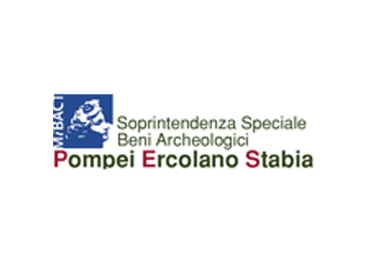
Special Superintendence for the Archaeological Heritage of Pompeii, Herculaneum and Stabiae official site
-
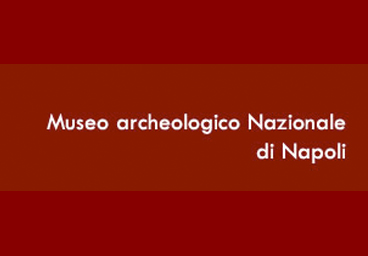
Naples National Archaeological Museum official site
-
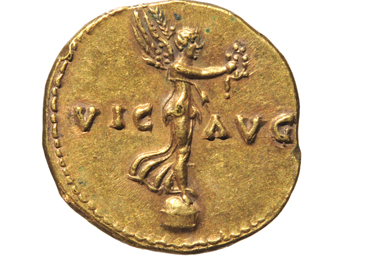
Italian Numismatic Portal, Virtual showcases of the Archaeological Museum of Naples Coin and Medal Collection
-
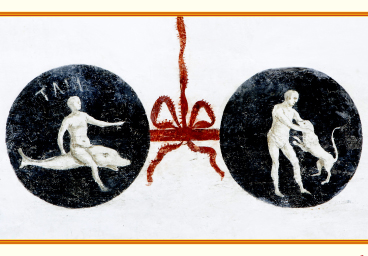
Italian Numismatic Portal, Notiziario n. 1-2013. Archaeological Museum of Naples Coin and Medal Collection
-
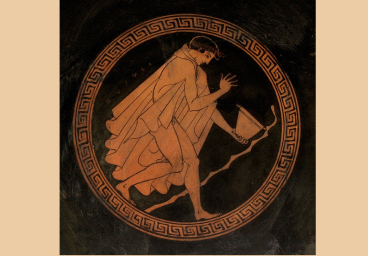
Italian Numismatic Portal, Notiziario n. 2-2013. Archaeological Museum of Naples Coin and Medal Collection
-
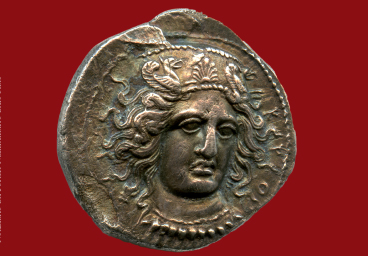
Italian Numismatic Portal, Notiziario n. 5-2014. Superintendence for the Archaeological Heritage of Naples, Archaeological Museum of Naples Coin and Medal Collection




